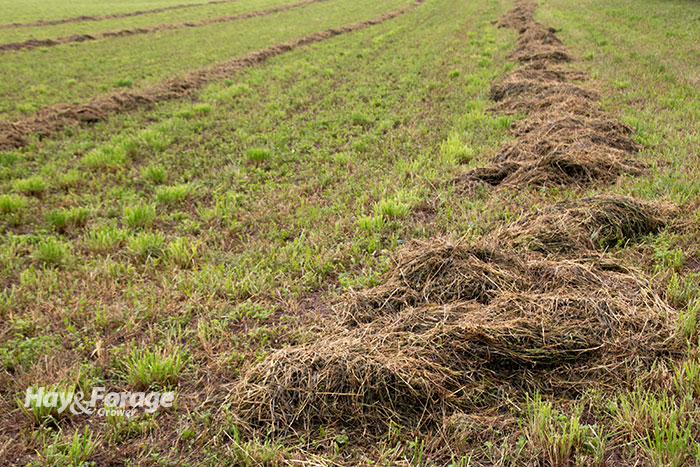
It seems drought has dominated the agricultural news feed for several years. Extended dry weather can dramatically reduce hay yields, but wet weather or simply baling hay that is too high in moisture can destroy a hay crop.
In a recent University of Nebraska BeefWatch newsletter, Extension Educators Hannah Smith, Ben Beckman, and Connor Biehler outlined some of the concerns and remedies for hay that is too high in moisture.
Top on the list of concerns is hay combustion. When hay is baled above 20% moisture, microbes begin to break down plant tissue, and mold starts to form. This same biological activity creates heat and the possibility of combustion.
“Bale combustion can begin at temperatures as low as 190°F, especially in coarse hays like sorghum-sudangrass hybrids,” the extension educators note. They further explain that these coarse-stemmed bales allow for greater oxygen flow, which elevates the risk for combustion. Moving hot bales can also result in more oxygen flow through the bales, providing fuel for combustion.
The educators recommend checking temperatures periodically on any wet hay bales. Use a long-stem compost thermometer or simply drive a metal pipe into the bale and drop in a nonmercury thermometer attached to a string. Closely monitor any bales at 170°F or higher. Once they reach this temperature, additional heating will most likely continue.
“If weather conditions don’t allow the hay to dry and cure, baleage or other high-moisture harvesting techniques can be an option,” the educators advise. “These other systems use a plastic wrap or tube to exclude oxygen and create an anaerobic fermentation environment that limits decomposition and heat production.”
Nobody likes to bale wet hay, but sometimes it happens. In such circumstances, the educators suggest storing that hay outside and away from other bales. Some insurance policies have limits on how many bales they will cover per stack.
Hold the mold
Even if hay doesn’t reach the point of combustion, wet bales will continue to decline in quality. “Mold growth uses plant tissues as an energy and protein source,” the authors explain. “Hot temperatures denature cell structures, which changes proteins and carbohydrates, making them unavailable for animal digestion.”
In situations where anaerobic conditions and heat exist, hay may “caramelize,” becoming golden colored and sweet smelling. Although animals find this type of feed highly palatable, the heat-fermented hay offers little nutritional value. Any suspected moldy or caramelized feed needs to be tested for forage quality after the heating process occurred. It will likely be much different than the results from a sample that was taken at the time of baling.
Mold has the potential to produce mycotoxins. The more typical moderate side effect for animals ingesting these toxins is reduced intake, poor rumen function, and overall reduced performance of the animal, including reproductive performance.
The authors suggest that the best way to use moldy hay is to spread out the bales and let the animals pick through them while also having a second source of clean hay for them to select from. Animals will avoid bales with excessive mold. Having clean hay available ensures animals aren’t forced to eat the moldy hay.
Pregnant animals are the most sensitive to mycotoxin poisoning, which can lead to fetal termination, so consider limiting the amount of moldy hay these animals receive. Horses are highly sensitive to moldy hay and should never be forced to eat any hay with visible signs of dust or mold.
Finally, mold is also a health risk to humans. Frequent ingestion of large amounts of dust and mold can cause respiratory issues such as farmer’s lung disease. To protect against this, the educators advise wearing an appropriate dust mask/respirator when working with hay that contains high amounts of mold and dust.

